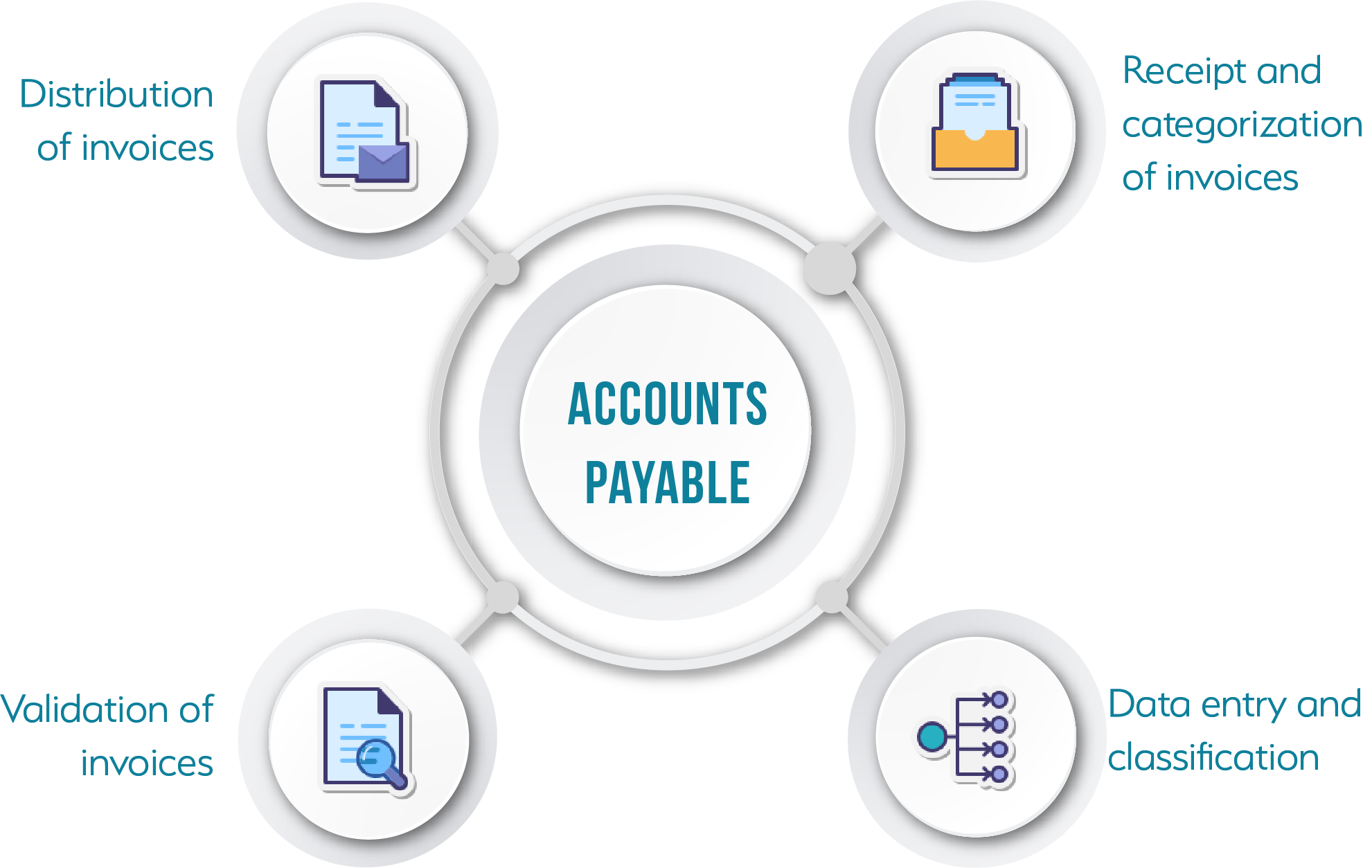Table of Content
Share This Article
- Published: October 30, 2023
- Last Updated: January 18, 2025
- 🔊 Read Article
Managing a business means dealing with vendors and handling payments. Before making these payments, the accounts payable (AP) team performs vendor reconciliation. This important step ensures that the vendor bills the correct amount to the company. But what exactly is the vendor reconciliation process in accounts payable, and why is it essential for your business?
This post will thoroughly explain the vendor reconciliation process and highlight its significance. We will also explore the benefits of automating this procedure, which can make your financial management more efficient.
What is the Vendor Reconciliation Process in Accounts Payable
Accounts payable reconciliation is a crucial financial practice that ensures the accuracy of an organization’s balances owed to vendors. This process involves comparing the organization’s accounts payable documents with the invoices and statements provided by vendors. Doing so confirms that the amounts recorded by both parties match.
This verification process serves several important purposes. First, it prevents the organization from overpaying or underpaying its vendors, helping maintain a healthy financial relationship. It safeguards against errors within the organization’s accounts payable records. Whether conducted by the internal accounting team or an external outsourced firm, vendor reconciliation is an essential step in responsible financial management.
By identifying disparities between vendor invoices and actual expenses, accounts payable reconciliation safeguards your company from financial risks, ensuring that you pay only what you owe and maintaining financial accuracy.
Steps For Vendor Reconciliation in Accounts Payable
Efficient vendor reconciliation is crucial to ensure accurate financial records and strengthen vendor relationships. Learn the following steps for reconciliation:
-
Gather All the Documents:
Ensure you collect all the needed paperwork, including vendor invoices, payment receipts, and bank statements. Ensure you have complete and accurate records for every transaction for the accounts payable process during the reconciliation period.
-
Examine Vendor Invoices:
Look closely at the vendor invoices to confirm their accuracy and completeness. Check for mistakes like vendor names, invoice numbers, payment amounts, or payment terms. Also, double-check that all vendor invoices have been correctly input into the accounts payable system.
-
Verify Payment Records:
Ensure that payment records, such as checks or electronic payment confirmations, align accurately with the associated vendor invoices and entries within the AP system. Log all payments correctly and watch out for duplicate payments or missing entries.
-
Reconcile:
Inspect vendor statements to ensure the outstanding balances align with the accounts payable records. If you spot any differences, such as missing payments or invoices, take steps to resolve these discrepancies.
-
Cross-check with Bank Statements:
Conduct a thorough comparison between the payment records stored in the accounts payable system and the corresponding entries in the bank statements. Verify the accuracy of all payments in the bank statements and ensure they correspond precisely with the payment records within the AP system.
-
Address Discrepancies:
Act quickly to investigate and resolve any inconsistencies you discover during the vendor reconciliation process in accounts payable. This may involve contacting vendors, reviewing payment documentation, or reconciling payment records with bank statements. Maintain detailed records of all discrepancies and their resolutions.
-
Make Necessary Changes:
Record any adjustments required to rectify discrepancies or errors in the AP system. These adjustments might involve entering missing invoices, correcting payment amounts, or updating payment terms.
-
Review and Finalize:
After resolving discrepancies, carefully review the reconciled accounts payable records to ensure accuracy and completeness. Create a report summarizing the adjustments and findings and obtain the necessary approvals.
-
Keep a Watchful Eye:
To maintain accurate and complete accounts payable records, regularly monitor and review them. You can also avoid errors and fraud in the AP process by implementing internal controls, such as utilizing automation tools and separating responsibilities.
Example Of Vendor Reconciliation
- Three vendors (Vendor X, Vendor Y, and Vendor Z) had outstanding balances in the company’s accounts payable ledger.
- The ledger indicated:
- Vendor X: $800
- Vendor Y: $1,200
- Vendor Z: $1,600
- Total: $3,600
- Vendor statements, received later, showed different balances:
- Vendor X: $800
- Vendor Y: $900
- Vendor Z: $2,000
- Discrepancies were noticed with vendors Y and Z.
- Vendor Y discrepancy:
- Investigation revealed an erroneously entered extra $300 invoice in the ledger.
- The accounts payable ledger was adjusted to correct the error, reducing Vendor Y’s balance to $900.
- Vendor Z discrepancy:
- An overlooked $400 invoice from Vendor Z was identified.
- The accounts payable ledger was adjusted to rectify the error, increasing Vendor Z’s balance to $2,000.
- After these adjustments, the revised accounts payable ledger matched the vendors’ statements.
- The total accounts payable was updated to $3,700, reflecting the corrected balances.
It is important to note that this is a simplified illustration. A company may have numerous vendors, and the process of reconciling accounts payable could be more intricate, involving larger sums. Nevertheless, the fundamental steps for accounts payable reconciliation remain consistent.
Benefits Of Vendor Reconciliation
Vendor reconciliation process in accounts payable offers numerous advantages for businesses. Here are some key benefits to consider:
-
Enhanced Financial Accuracy:
Vendor reconciliation ensures your financial records remain precise. This process allows you to pinpoint discrepancies and rectify errors in your accounts payable before they escalate into significant financial challenges.
-
Improved Cash Flow Management:
Vendor reconciliation empowers you to plan more effectively for upcoming expenses by closely examining outstanding invoices and payments. This proactive strategy ensures you maintain sufficient cash reserves to fulfill your financial commitments without interruptions.
-
Strengthened Vendor Relationships:
Timely payment and the swift resolution of any vendor issues demonstrate your customer reliability. Building trust in this manner can pave the way for better negotiation terms in future transactions. It is a win-win situation that benefits both parties.
-
Prevention of Costly Mistakes:
Vendor reconciliation in accounts payable safeguards against costly mistakes, such as double or missed payments. Identifying and addressing these accounting errors promptly saves both time and money.
-
Increased Financial Transparency:
A well-maintained vendor reconciliation process enhances financial transparency. It provides a clear overview of financial commitments, making tracking expenses easier and enabling informed business decisions.
-
Compliance Assurance:
It is crucial to ensure vendor accounts align with contractual agreements and industry regulations. AP reconciliation helps you meet compliance requirements and avoid potential legal issues.
Challenges of Vendor Reconciliation in Accounts Payable
Manual vendor reconciliation in accounts payable can be complex and challenging for businesses. Several key challenges must be navigated to ensure accuracy and efficiency in this crucial financial task.
-
Volume of Transactions:
High transaction volumes can overwhelm manual reconciliation efforts. Businesses with numerous vendors and invoices often struggle to keep up with the sheer volume of data.
-
Data Discrepancies:
Discrepancies between a company’s records and vendor statements can be time-consuming to resolve. Identifying the root causes of discrepancies can be challenging.
-
Duplicate Payments:
The risk of making duplicate payments is a constant concern. Detecting and rectifying such errors requires meticulous attention to detail.
-
Data Entry Errors:
Manual data entry can cause many mistakes, resulting in inaccurate reconciliation and financial reporting.
-
Timeliness:
Delays in vendor reconciliation can affect cash flow management and strain vendor relationships, especially if payments are not made on time.
-
Communication:
Effective communication with vendors is essential for dispute resolution and reconciling discrepancies. Poor communication can become a cause of delays and misunderstandings.
-
Regulatory Compliance:
Ensuring compliance with tax regulations, accounting standards, and industry-specific rules can complicate the reconciliation process.
-
Resource Constraints:
Many businesses face resource limitations regarding staff, technology, and tools for efficient reconciliation.
Considering these challenges often requires investing in outsourcing, enhancing communication with vendors, and implementing strong internal controls. Effective accounts payable services are critical for maintaining financial accuracy, relationships, and operational efficiency. Outsourcing vendor reconciliation can help businesses save time for other effective tasks for better growth.
Key metrics to follow in Vendor Reconciliation
Certain key metrics should be monitored to manage this process effectively. These essential KPIs provide insights into the reconciliation process’s efficiency and accuracy, helping businesses identify areas for improvement and maintain healthy financial practices.
-
Discrepancy Rates:
This metric measures the percentage of transactions that do not match the company’s records and the vendor’s statements. A high discrepancy rate can indicate problems in the procurement process, data entry errors, or issues with the vendor’s invoicing. Monitoring this rate helps identify frequent errors and take corrective actions to reduce discrepancies, thereby streamlining the reconciliation process.
-
Resolution Time:
The time it takes to resolve discrepancies is a critical metric in vendor reconciliation. It measures the efficiency of the accounts payable team in addressing and resolving mismatches or disputes. Faster resolution times lead to better vendor relationships and more efficient cash flow management. Keeping track of this metric helps businesses optimize their processes and allocate resources more effectively to areas causing delays.
-
Aging of Unreconciled Items:
This metric tracks the time that unreconciled items remain outstanding. It is crucial for managing cash flows and maintaining accurate financial records. Items that remain unreconciled for long periods can lead to financial misstatements and affect the reliability of financial reporting. Regular monitoring helps ensure that all items are addressed promptly and kept within acceptable time frames.
-
Cost of Reconciliation per Vendor:
Understanding the cost involved in reconciling accounts with each vendor can help evaluate the reconciliation process’s efficiency. This metric includes labor costs, technology costs, and any other expenses associated with reconciliation activities. Analyzing this cost helps determine whether the process is cost-effective or if there are opportunities to reduce expenses through process improvements or automation.
-
Vendor Response Time:
This measures how quickly vendors respond to queries regarding discrepancies or requests for additional documentation. A slow response time can delay the reconciliation process, impacting the overall efficiency of accounts payable operations. Tracking this metric can highlight the need for better communication strategies or adjustments in the reconciliation schedule.
-
Accuracy Rate of Initial Submissions:
The accuracy rate of initial submissions by vendors is an indicator of how often vendor invoices are correct and complete when first received. A higher accuracy rate simplifies the reconciliation process, reduces the workload on the accounts payable team, and speeds up the entire payment cycle. Improvements in this area can often be achieved through better vendor education and clearer invoicing requirements.
-
Percentage of Automated Reconciliations:
With the growing adoption of technology in finance, tracking the percentage of reconciliations that are automated versus manual provides insights into the digital transformation of accounts payable processes. Higher automation rates generally correlate with lower error rates, faster processing times, and reduced operational costs.
By monitoring these key metrics, businesses can gain valuable insights into their vendor reconciliation processes, identify bottlenecks, and discover opportunities for improvement.
Drawbacks of Manual Statement Reconciliation
Manual statement reconciliation is a traditional method of comparing financial records to ensure accuracy between account statements and ledgers. While this process has been the norm for many years, it comes with several significant drawbacks, particularly as businesses scale and transactions become more complex.
-
Increased Risk of Errors:
One of the primary drawbacks of manual reconciliation is the high probability of human error. Reconciling statements by hand involves tedious, repetitive tasks that can lead to mistakes such as misentries, omissions, or duplications. These errors can distort financial reports, leading to misguided business decisions and potentially severe financial discrepancies.
-
Time-Consuming Process:
Manual statement reconciliation requires substantial time and effort. Staff must sift through numerous transactions and match them one by one, a process that can take hours or even days, depending on the volume of data. This labor-intensive approach is inefficient and can significantly delay financial reporting and decision-making processes.
-
Higher Operational Costs:
Employing staff to manually reconcile statements can be costly for businesses. These costs increase with the volume of transactions and the complexity of the accounts. Furthermore, the inefficiencies and slow processing times associated with manual reconciliation can lead to additional indirect costs, such as delayed financial analysis and decision-making.
-
Scalability Issues:
As a business grows, the volume and complexity of financial transactions increase. Manual reconciliation processes do not scale well because they require proportionally more time and human resources as transaction volumes grow. This can become a bottleneck for businesses aiming to expand rapidly.
-
Increased Risk of Fraud:
Manual systems are more susceptible to fraud and misconduct. The lack of strong controls and automated checks in manual reconciliation processes can make it easier for unscrupulous employees to manipulate records or commit fraud, potentially going unnoticed due to the slower detection methods.
-
Difficulty in Tracking Historical Data:
Manual reconciliation systems often rely on physical paperwork or basic electronic spreadsheets. These methods can make it difficult to track and retrieve historical transaction data efficiently. During audits or when trying to resolve discrepancies, the inability to quickly access historical data can be a significant hindrance.
-
Compliance Challenges:
Ensuring compliance with financial regulations is more challenging with manual processes, which may not consistently adhere to the latest regulatory standards. Manual reconciliation often lacks the systematic approach required to guarantee compliance, leading to potential legal and financial repercussions.
-
Limited Real-Time Insights:
In today’s fast-paced business environment, real-time financial insights are crucial for making informed decisions. Manual reconciliation processes typically result in delayed financial reporting, which can hinder a business’s ability to respond quickly to market changes or internal financial issues.
Role of Automation in Streamlining Vendor Reconciliation
Vendor reconciliation is a critical process in accounts payable that involves matching vendor invoices with purchase orders and payment data to ensure accuracy in financial records. Automation of accounting plays a significant role in enhancing this process, offering numerous benefits that lead to increased efficiency and reduced errors.
-
Improving Accuracy and Reducing Errors:
Automation significantly reduces human errors that can occur during data entry. Automated systems are designed to precisely match data from invoices and purchase orders, ensuring that payments are made only for verified transactions. This level of accuracy is crucial for maintaining trustworthy financial records and for preventing fraud.
-
Speeding Up the Reconciliation Process:
Manual reconciliation can be time-consuming, especially for businesses dealing with large volumes of transactions. Accounting automation speeds up the reconciliation process by instantly comparing and processing data. This rapid processing allows businesses to close their financial books faster and provides more timely insights into financial performance.
-
Enhancing Data Management:
Automated systems organize and store data more efficiently than manual systems. They provide quick access to historical data, making it easier to retrieve past invoices, payment records, and other financial documents. This is especially useful during audits or when resolving disputes with vendors.
-
Reducing Operational Costs:
While setting up an automated reconciliation system may require an initial investment, the long-term savings are substantial. Automation reduces the need for a large staff to manage accounts payable, cuts down on paper use, and minimizes the likelihood of late payments and associated fees due to timely processing.
-
Increasing Vendor Satisfaction:
Accurate and prompt payments are vital for maintaining good relationships with vendors. Automation ensures that payments are processed on time according to the terms agreed upon. This reliability can enhance vendor trust and can lead to more favorable payment terms and discounts.
-
Facilitating Compliance and Reporting:
Automated systems are designed to comply with industry standards and regulations. They help ensure that all financial transactions are recorded and reported accurately, aiding in compliance with financial regulations. Additionally, automation provides robust reporting features that can help management track spending, monitor accounts payable management, and make informed financial decisions.
How is Outsourcing Vendor Reconciliation in Accounts Payable Helpful for Your Business?
Outsourcing the vendor reconciliation process in accounts payable offers several benefits to businesses. It allows organizations to streamline financial operations, reduce costs, and improve accuracy. Outsourced accounting services can efficiently identify discrepancies, errors, and duplicate payments, helping maintain precise financial records. This, in turn, enhances vendor relationships by ensuring timely payments and dispute resolutions. Moreover, it frees up internal resources, enabling teams to focus on core business activities. Outsourcing the payment reconciliation process is a strategic move promoting efficiency and financial stability in business operations.
Bottom Line
In conclusion, the vendor reconciliation process in accounts payable is a fundamental aspect of sound financial management for businesses. It ensures financial accuracy, prevents costly errors, strengthens vendor relationships, and enhances transparency. However, this process comes with its own set of challenges, particularly when handled manually. High transaction volumes, data discrepancies, duplicate payments, and resource constraints can make it complex.
Many businesses are turning to outsourcing to overcome these challenges and achieve greater efficiency. Outsourcing vendor reconciliation in accounts payable streamlines financial operations reduces costs, and improves accuracy. It allows for the timely resolution of discrepancies and provides internal resources to focus on core business activities. Ultimately, whether through in-house efforts or outsourcing, maintaining accurate and efficient vendor reconciliation is essential for financial stability and business success.

Get customized plan that supports your growth

Thousands of business owners trust Whiz to manage their account
Let us take care of your books and make this financial year a good one.








